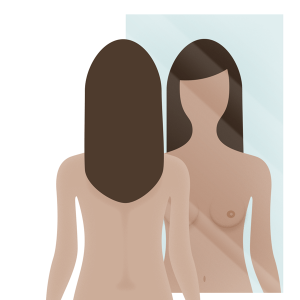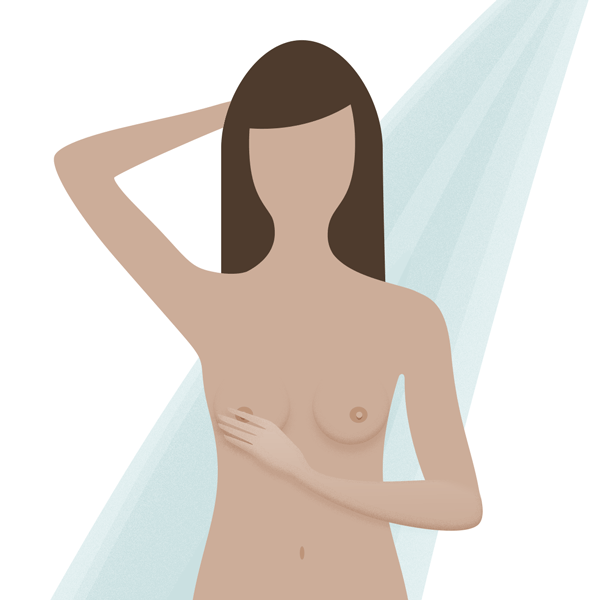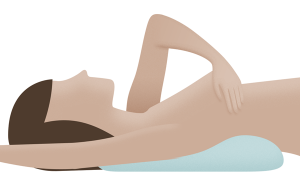
October is Breast Cancer Awareness Month, and it is particularly personal for us here at NNT.
This month we take special care in honouring Anna Borg, the darling mother of Candace Borg, the brains behind Northcote Natural Therapies and our Naturopath. Anna lost her very tough battle to breast cancer in 2017. And with this month, on October 24th being the celebration of her birthday, we want to take this opportunity to remind our community of the importance of monthly self-breast checks.
We are here to help you to understand what’s normal and what’s not for your body. So if you haven’t performed a breast check this month, it’s time to hop to it! And don’t forget to remind all of the women in your life to do the same.
With the help of our friends from Juju, below is a quick guide on how to do a breast check at home. We have provided a clear guide of what to look out for and when to see your doctor.
How to do a breast check at home
We should all perform a breast check at home every month, from our twenties onwards. It’s recommended to check your breasts while in front of a mirror and when lying down to get a full picture. Getting to know your body is a important as it can make spotting any signs abnormalities much easier. One thing to remember is….
“breast checks are not as scary as they seem”

Here are the steps:
Step 1: Standing in front of a mirror, place your hands on your hips and press firmly to tense your chest muscles. Observe your breasts and nipples. Notice their shape, colour and contour. Check for any redness, rashes, swelling, dimpling or nipple discharge.
Step 2: Still standing in front of a mirror, raise your hands above your head. Take note of the same things you did in Step 1. Where there any changes?
Step 3: Feel your breasts when standing. It is recommended to do this in the shower while your skin is slippery. Use the pads of your fingers or a flat hand to press gently in a circular motion on your breasts. Do this one at a time, moving around the outside (including the armpit and up to the collarbone) and working into the centre. Observe any thickening, lumps or painful areas. If you do notice any, have them evaluated by your doctor.
Step 4: Check your breasts when lying down – this can make it easier to feel abnormalities, as the breast tissue spreads out over the chest wall. When lying on your back, place a pillow under your right shoulder and place your right hand behind your head. Use the pads of your fingers to press gently in a circular motion on your breasts one at a time, moving around the outside (including the armpit and up to the collarbone) and working into the centre. Observe any thickening, lumps or painful areas. Repeat on the left breast, and if you notice any abnormalities, have them checked by your doctor.
When you should see your doctor
When it comes to your breast health, it’s always better to be safe and discuss any abnormalities with your doctor. You should see your doctor if you notice:
- New breast lumps or hardened areas
- Breast dimpling or puckering
- Changes in the shape or colour of your breasts or nipples
- Persistent breast or nipple pain, itchiness or rashes
- Nipple discharge
When do you need to get a mammogram?
From the age of 40, it’s recommended that we have a mammogram every two years. This is to check for smaller abnormalities that you or your doctor may not be able to see or feel. In Australia, screening mammograms are provided free of charge to women over 40 every two years – depending on which state you live in.
Understanding breast cancer risk factors
The biggest risk factor for breast cancer is being female, although there are a small number of males who develop breast cancer (1 in 657). Our chances of developing breast cancer also increase with age, with most cases of breast cancer occurring in women after menopause. Family history and genetics also play a major role, as does if you have been diagnosed with breast cancer earlier in life. So if you have known cases of breast cancer in your family, this is even more reason to stay on top of your self-breast checks.
So are there any lifestyle changes we can make to lower the risk of developing breast cancer?
Yes, there are definitely things we can do to minimise our potential risks of developing breast cancer. These include:
- Maintaining a healthy weight – aim to keep your BMI between18.5 to 25 kg/m2, and keep your waist circumference of below 80 cm (31.5 in).
- Living an active lifestyle and exercising regularly
- Limiting your intake of alcohol to no more than 1 standard drink per day
- Not smoking
Certain hormone replacement medications are also associated with an increased risk of breast cancer, so be sure to discuss this with your doctor.
Be breast aware
Being breast aware and understanding what to look for during your monthly breast checks is imperative for early detection and treatment. Get to know your body, check your breasts every month and encourage all of the women in your life to do the same!


